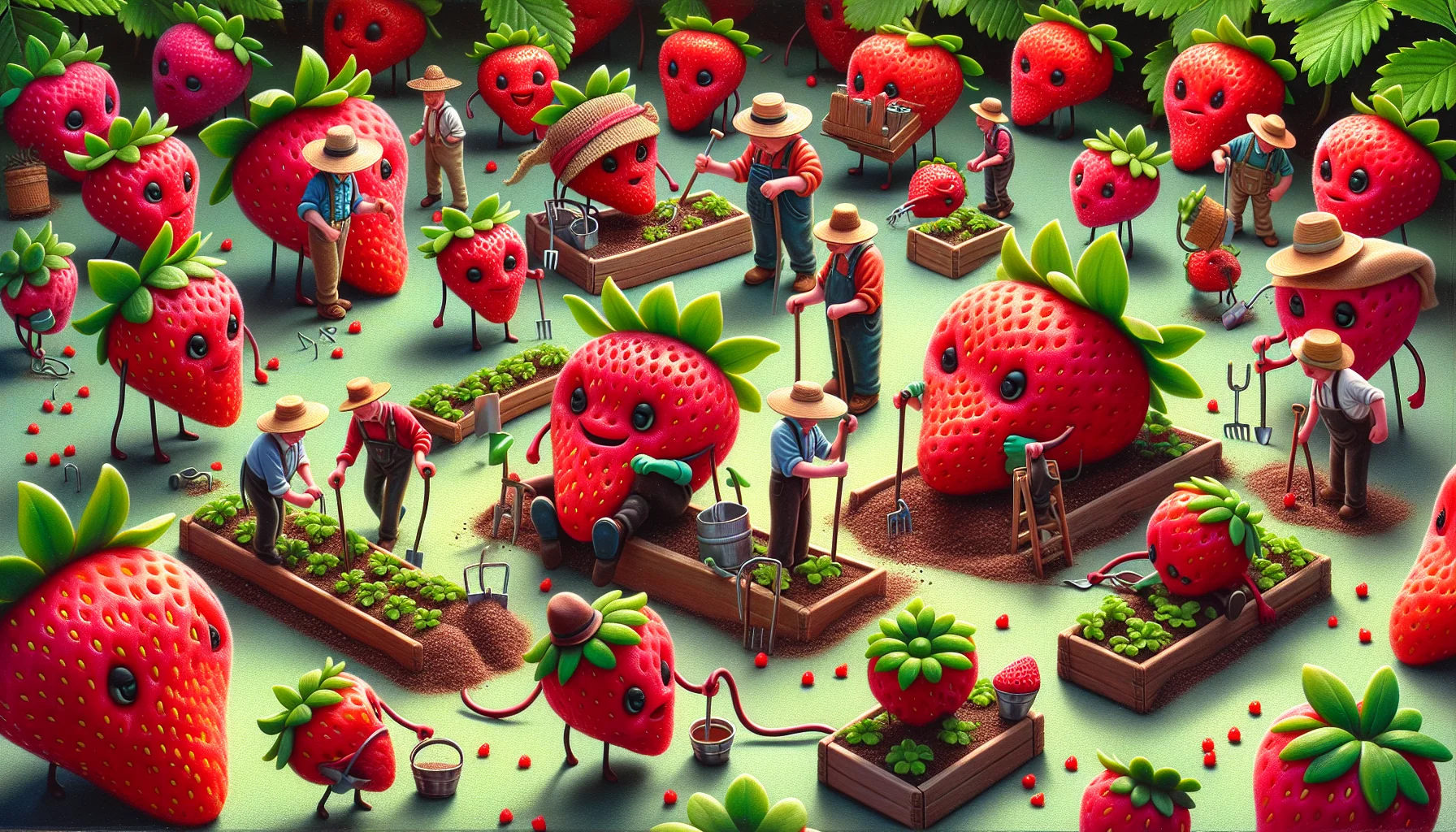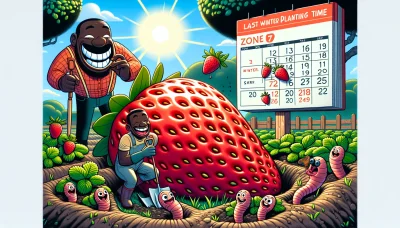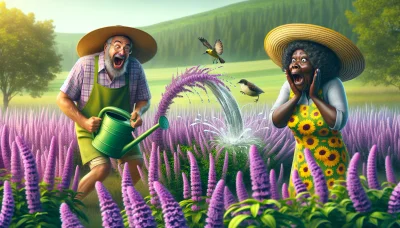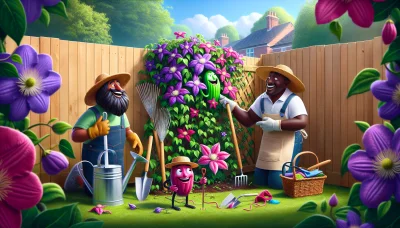Strawberry species Quiz
Test Your Knowledge
Question of
Understanding Strawberry Species
Knowing the different strawberry species is crucial for gardeners aiming to achieve the best yield and fruit quality. Each species has its own set of requirements for climate, soil type, and care. By understanding these differences, gardeners can select the species that is best suited to their local environment and gardening style. This knowledge also aids in combating pests and diseases more effectively, ensuring a bountiful and healthy harvest.
The Origins of Strawberry Plants
The history and origins of strawberry plants trace back to ancient times, with their wild varieties being native to various regions across the globe. The common garden strawberry that we are familiar with today, however, has its roots in the 18th century when French botanists crossbred North American species with Chilean varieties. This crossbreeding was aimed at combining the larger fruit size of the Chilean strawberry with the hardiness and flavor of the North American varieties, resulting in the Fragaria x ananassa species most commonly cultivated today. Strawberries have been cherished throughout history for their sweet flavor, medicinal properties, and as a symbol of purity and passion in various cultures. Their cultivation and popularity have spread worldwide, making them a staple fruit in many cuisines and cultures.
Popular Strawberry Species for Your Garden
- June-bearing Strawberries: Known for producing a large, concentrated crop in late spring to early summer. Ideal for those who want to harvest a lot of strawberries at once.
- Ever-bearing Strawberries: These plants produce two to three harvests throughout the spring, summer, and fall. Great for continuous harvesting.
- Day-neutral Strawberries: Capable of producing fruit throughout the growing season as long as temperatures remain between 35 and 85 degrees Fahrenheit. Perfect for gardeners looking for a steady supply of strawberries.
- Alpine Strawberries: Known for their small, flavorful fruits, alpine strawberries are less commonly grown but highly prized for their exquisite taste. They are great for borders or as edible ground cover.
- Sequoia Strawberries: Popular in warmer climates, Sequoia strawberries are known for their large size and sweetness. They are a favorite for many due to their delicious flavor and substantial fruit.
- Chandler Strawberries: Chandler strawberries are appreciated for their large, juicy berries that are perfect for eating fresh. They have a relatively long harvesting season, making them a favorite among gardeners.
Caring for Different Strawberry Species
Strawberry plants, with their lush green foliage and juicy red fruits, are a favorite among gardeners. However, not all strawberry plants are the same. Different species, such as June-bearing, everbearing, and day-neutral strawberries, have varying care requirements that are crucial for their growth and fruit production. For instance, June-bearing varieties produce a large crop in early summer and require a period of dormancy, while everbearing and day-neutral types can produce fruit throughout the growing season under the right conditions. Understanding the specific needs of your strawberry species, including their preferred sun exposure, watering needs, and soil type, is essential for a bountiful harvest. Regular feeding, careful pruning, and protection from pests and diseases also play significant roles in the health and productivity of your strawberry plants. By catering to the unique requirements of each species, you can ensure a delicious and vibrant strawberry crop year after year.
Strawberry Planting Seasons
| Species | Hardiness Zone | Best Planting Time |
|---|---|---|
| June Bearing | 4-7 | Early Spring |
| Everbearing | 5-9 | Late Spring to Early Summer |
| Day-Neutral | 4-8 | Spring through Summer |
| Alpine | 3-9 | Spring |
Pests and Diseases Affecting Strawberry Species
-
Spider Mites
: These tiny pests feed on plant juices, causing leaves to become speckled and weak.
- Prevention : Regularly rinse plants with water to knock off mites. Maintain healthy humidity levels.
- Treatment : Apply miticides or introduce natural predators like ladybugs.
-
Slugs and Snails
: They eat holes in leaves, stems, and fruit, especially in wet conditions.
- Prevention : Use copper barriers around the garden beds. Keep the area free of debris where they can hide.
- Treatment : Use organic slug baits or handpick them during evening hours.
-
Powdery Mildew
: A fungal disease that coats leaves in a white, powdery film.
- Prevention : Ensure plants have good air circulation. Water plants at the base to avoid wetting leaves.
- Treatment : Apply sulfur-based fungicides or baking soda mixed with water.
-
Botrytis Fruit Rot (Gray Mold)
: Causes fruit to rot and develop a gray, fuzzy mold.
- Prevention : Space plants to improve air circulation. Avoid overhead watering.
- Treatment : Remove and destroy infected parts. Apply appropriate fungicides if necessary.
-
Verticillium Wilt
: A soil-borne fungus that causes plants to wilt and die.
- Prevention : Plant resistant varieties. Rotate crops and avoid planting where susceptible plants were grown before.
- Treatment : Remove affected plants. Solarize soil before replanting.
-
Aphids
: Small insects that suck sap from plants, causing growth to be stunted.
- Prevention : Introduce natural predators like ladybugs. Plant companion plants that repel aphids.
- Treatment : Use insecticidal soaps or neem oil sprays to control infestations.
Harvesting and Enjoying Your Strawberries
Harvesting strawberries at the right time is crucial for the best flavor. Wait until the berries are fully red, with no white or green spots, before picking. Gently twist the berries off the stem to avoid damaging the plant. To enjoy your strawberries, try adding them to a fresh salad, blending them into a smoothie, or simply eating them as a sweet, juicy snack. For a special treat, dip strawberries in melted chocolate and refrigerate until the coating is firm. Remember, freshly picked strawberries don't last long, so plan to use them within a few days for the best taste and texture.












